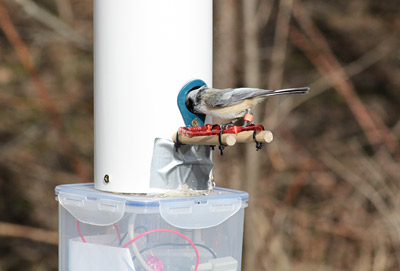'Smart' bird feeders can track who eats when
By Krishna Ramanujan

To study bird feeding and breeding behavior, ornithologists used to tag birds with colored bands and then painstakingly track the birds' activity. But now, an existing technology repurposed for tracking birds by researchers at the Cornell Lab of Ornithology automates such data-collecting, requiring scientists to spend only a few hours a week tending to feeders wired with tracking technology.
The technology, called RFID (radio frequency identification), requires researchers to tag birds on the leg, while a battery- or solar-powered antenna and micro-computer on a feeder perch records an ID number whenever a tagged bird comes within a few inches of the feeder. The system reduces errors, records even the briefest visits and generates a complete record. Cornell ornithology researchers have now recorded more than 2.5 million visits by tagged birds to wired feeders.
In the past, RFID readers have prohibitively cost up to $10,000 each, but David Bonter, Project FeederWatch director at the ornithology lab, and Eli Bridge at the University of Oklahoma have developed a do-it-yourself version that can be made for about $40. They have posted instructions online at www.animalmigration.org and recently published them in the Journal of Field Ornithology.
RFID tags have been used to track pets in case they get lost and packages by shipping companies, for example. Biologists have used RFIDs since the 1990s to monitor hordes of birds such as terns and penguins. When used in feeders, the continuous data may help answer such questions as when birds feed during the day, how weather affects feeding behavior and whether feeder location influences feeding behavior.
Get Cornell news delivered right to your inbox.
Subscribe